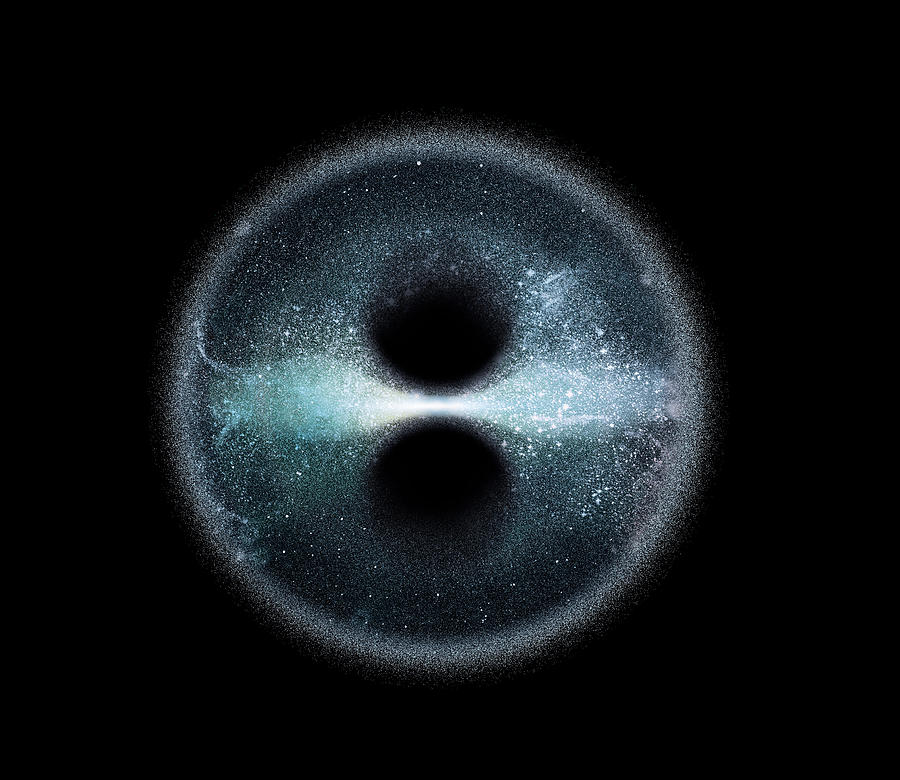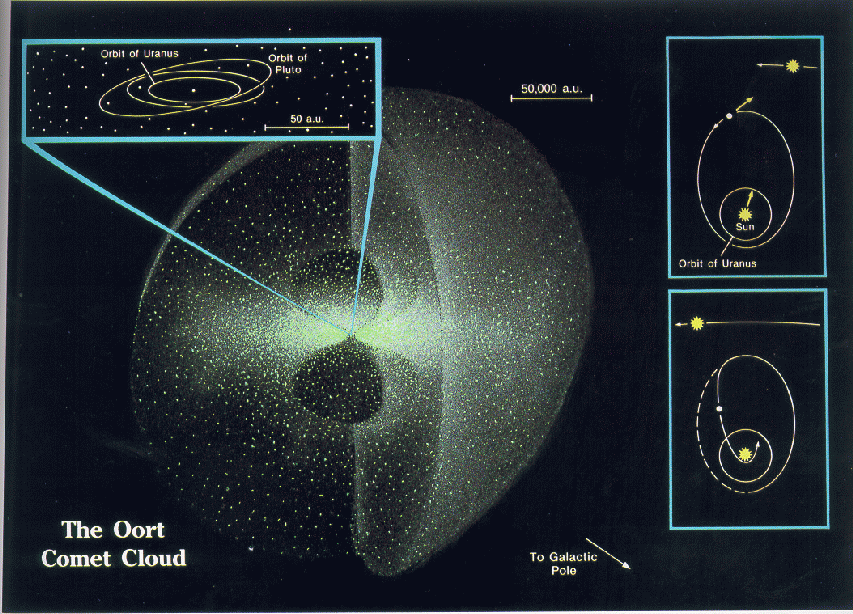The oort cloud is also known as a cometary reservoir as long period comets are thought to originate there they take thousands of years to go around the sun

The Oort Cloud: A Cometary Reservoir in Our Solar System

Located in the outermost regions of our solar system lies the mysterious Oort Cloud. This vast and enigmatic structure, also referred to as the “cometary reservoir,” is thought to be the birthplace of long-period comets. These comets, with their remarkable orbits, take thousands of years to complete a single journey around the sun. Let’s delve into the fascinating details of the Oort Cloud and its role in shaping our cosmic neighborhood.
Unveiling the Elusive Oort Cloud

Named after the Dutch astronomer Jan Oort, who proposed its existence in the mid-20th century, the Oort Cloud is an immense shell of icy bodies that surrounds the sun at an astounding distance of up to 100,000 astronomical units (AU). To put it into perspective, one AU is equivalent to the average distance between the Earth and the Sun, approximately 93 million miles. This staggering distance places the Oort Cloud far beyond the orbits of Neptune and Pluto.
A Hidden Archive of Ancient Objects
The Oort Cloud is believed to harbor billions, if not trillions, of icy planetesimals that are remnants from the early stages of our solar system’s formation. These planetesimals, often dubbed “dirty snowballs,” consist of a mixture of water, methane, ammonia, and other volatile substances. As they journey through space, they freeze and form a solid core, encompassed by a gaseous halo called the coma and an iconic glowing tail when activated by the sun’s heat.
The Origin of Long-Period Comets
Long-period comets, typically characterized by orbits lasting over 200 years, are believed to originate from the Oort Cloud. These comets, also known as Oort Cloud comets, embark on extraordinary expeditions that traverse our solar system, showcasing spectacular celestial displays for us to behold. Their remarkable journeys take them near the sun, where the heat causes the volatile icy surface to sublime, resulting in the magnificent coma and tail formations that captivate stargazers worldwide.
Journeying Through Eons
The lengthy orbital periods of Oort Cloud comets are a product of their immense distance from the sun. It is estimated that they take thousands, if not millions, of years to complete a single orbit. This protracted journeying distinguishes them from their short-period counterparts, such as Halley’s Comet, which boasts an orbit of just 76 years. It is their extended voyage through the depths of space that grants Oort Cloud comets an otherworldly allure and makes them a subject of great intrigue for astronomers and enthusiasts alike.
Expanding Our Understanding of the Oort Cloud
Though the Oort Cloud’s existence is still largely theoretical, ongoing scientific research and technological advancements continue to shed light on this elusive cometary reservoir. Space exploration missions, such as the upcoming Comet Interceptor mission by the European Space Agency, aim to witness and analyze comets directly from the Oort Cloud, providing invaluable insights into the origins of our solar system and the formation of comets.
To delve even deeper into the wonders of the Oort Cloud, you can visit NASA’s official website, which provides a comprehensive overview of this captivating celestial structure. By exploring the Oort Cloud further, we can uncover more secrets of our cosmic neighborhood and expand our knowledge of the boundless wonders that exist beyond our home planet.
Related Posts
Quick Links
Legal Stuff

